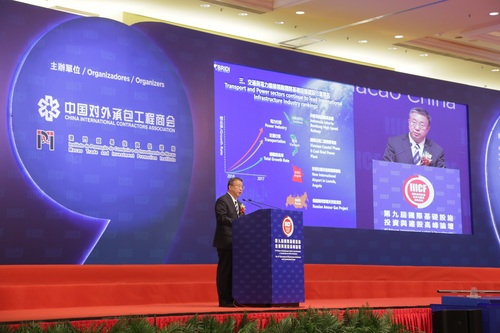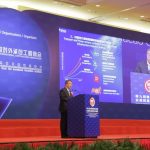 The release ceremony of the Belt and Road Infrastructure Development Index 2018 and the Annual Report on Development of the Belt and Road Construction (2018)
The release ceremony of the Belt and Road Infrastructure Development Index 2018 and the Annual Report on Development of the Belt and Road Construction (2018)
The release ceremony of the Belt and Road Infrastructure Development Index 2018 and the Annual Report on Development of the Belt and Road Construction (2018) was held at the 9th International Infrastructure Investment and Construction Forum on 7 June. It is shown in the report that the increasingly broad international influence of the Belt and Road Initiative has tightened the connectivity of infrastructure facilities among the related countries and enhanced their collaboration. The infrastructure development indexes of the Belt and Road countries have reached new heights this year. Indonesia, Singapore, Pakistan, Russia, and Vietnam claimed the top five positions in the ranking of infrastructure development index among other the Belt and Road countries, while Brazil, Portugal, and Angola among Portuguese-speaking countries were in the front rank on several rankings, among which Brazil has shown the strongest development potential.
At the press conference, Mr. Fang Qiuchen, Chairman of the China International Contractors Association, said that the indexes announced for the first time last year had attracted the attention of many multinational infrastructure operators and was then reputed as the "barometer" of the "Belt and Road" infrastructure co-operation, providing an indicative reference for the global infrastructure sector. This year, the research team continued to build a three-dimensional index analysis model of the infrastructure development environment, development potential, and development trends, and published 71 index analysis reports for the countries along the Belt and Road and Portuguese-speaking countries.
According to the report, the total index of the Belt and Road infrastructure development has reached 124 at record high this year. In the ranking of infrastructure development indexes of countries along the Belt and Road, Indonesia ranked first for two consecutive years. Its development environment, development potential, and development trend index ranked among the top, followed by Singapore, Pakistan, Russia, Vietnam, Brazil, Poland, Turkey, Malaysia and India. In the ranking of infrastructure development indexes of Portuguese-speaking countries, Brazil, Angola and Portugal ranked the top three. In the ranking of development environment, Singapore ranked first and Portugal ranked sixth. In the ranking of development potential, Russia, India and Brazil ranked the top three. In the ranking of development trends, Indonesia ranked first and Brazil ranked seventh.
The research report reveals five characteristics of infrastructure development in the countries along the Belt and Road: 1. The overall development of international infrastructure is promising, suggesting a continuous and steady grow in the next three years. 2. The development momentum in Southeast Asia remains strong. Benefited from the increased score of the Brazil, and the improved development environment and development potential of Portugal and Angola, the rankings of Portuguese-speaking countries have climbed up by 2 places in the regional index compared with last year. 3. The transportation industry and energy industry will continue to provide support for the development of international infrastructure. 4. New changes are taking place in the international infrastructure development model under the influence of the Belt and Road Initiative. New policies, new finances, and new technologies are providing new drivers of infrastructure development. International multilateral financial institutions have initiated a great number of financial innovations to collaborate with the construction of the Belt and Road infrastructure, and the investment and financing environment for international infrastructure construction have further improved. 5. The values of newly signed multinational infrastructure contracts have risen, and the scale of infrastructure development has continued to grow. In 2017, the value of multinational infrastructure project contracts newly signed by countries along the Belt and Road has increased by 6.1%, amounting to USD430.7 billion.
Three development recommendations were proposed in the report: 1. Governments should pay adequate attention to upstream design and policy communication, and intensify their co-operation in infrastructure; 2. financial institutions should expedite innovations and lead forward the sustainable development of multinational infrastructure through green finance; 3. enterprises should make good use of the Belt and Road "barometer" to explore their own development paths.
The Belt and Road Infrastructure Development Index 2018 and the Analysis Report on the Annual Report on Development of the Belt and Road Construction (2018) have been uploaded to www.bridi-research.comand http://www.iiicf.org/for download.


